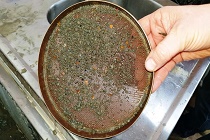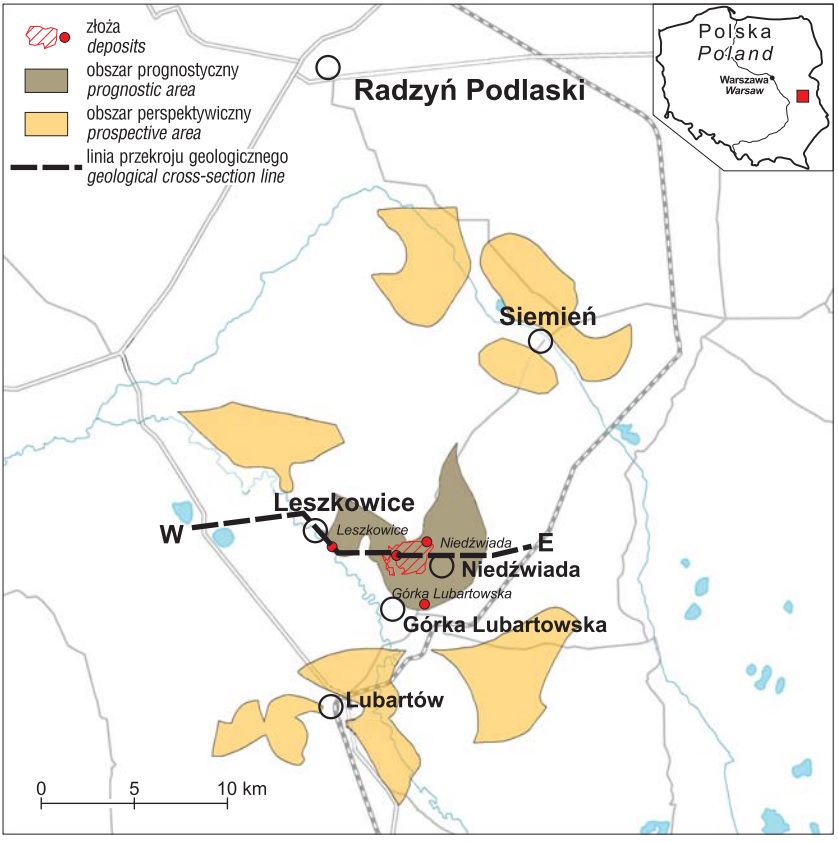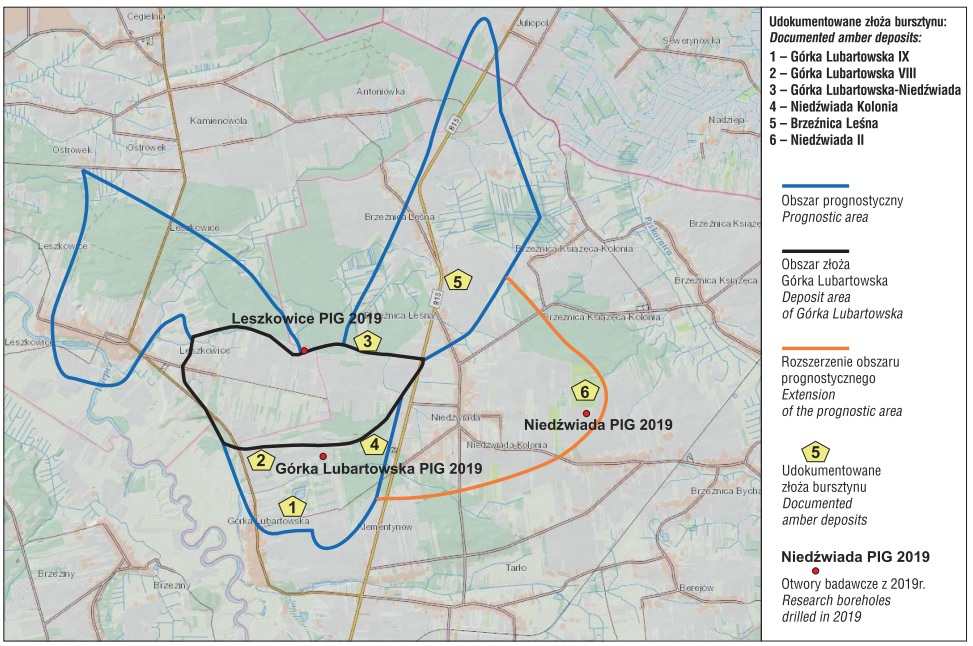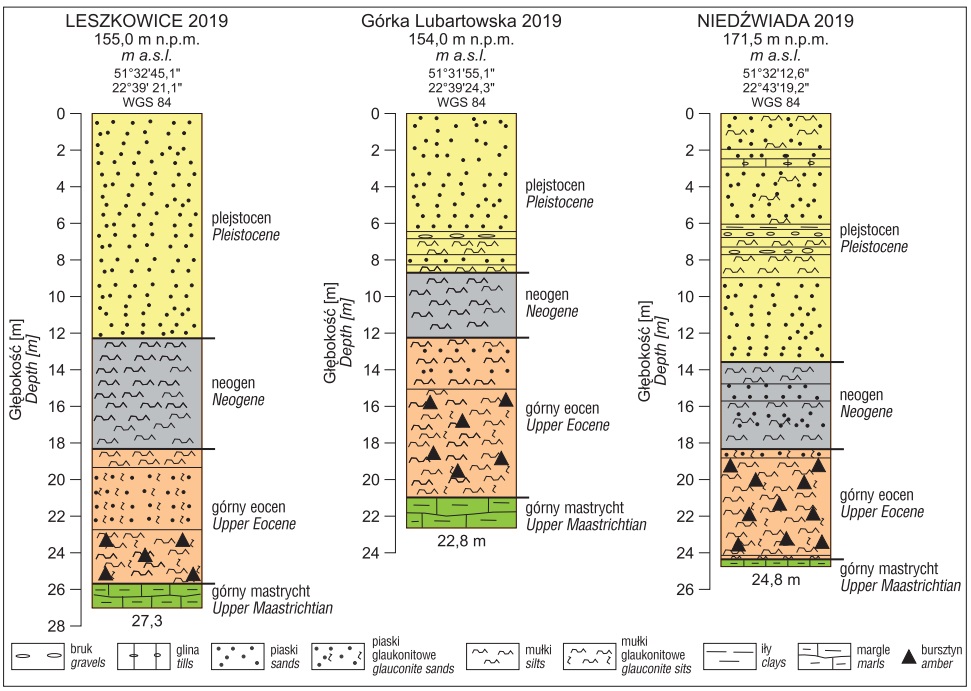 It is no longer the Baltic coast, nor the Vistula delta, but the Lublin region that is the most promising area for amber mining in Poland. According to The Balance of Mineral Deposits in Poland as of 31.12.2020, out of almost 3581 tons of identified national resources of amber, a little more than 98% can be found in the Lublin region. Preliminary forecasts indicate that it may be much more - even 22 thousand tons. These are the conclusions of the "Balance of prospective mineral resources in Poland as of 31.12.2018", made by specialists from the National Geological Institute - NRI.
It is no longer the Baltic coast, nor the Vistula delta, but the Lublin region that is the most promising area for amber mining in Poland. According to The Balance of Mineral Deposits in Poland as of 31.12.2020, out of almost 3581 tons of identified national resources of amber, a little more than 98% can be found in the Lublin region. Preliminary forecasts indicate that it may be much more - even 22 thousand tons. These are the conclusions of the "Balance of prospective mineral resources in Poland as of 31.12.2018", made by specialists from the National Geological Institute - NRI.
Baltic amber (succinite) found on the Baltic coast and the Lublin deposits located several hundred kilometers to the south were formed at the same time - about 45 million years ago in the geological epoch called the Eocene (part of the Baltic deposits were redeposited in the Holocene and Pleistocene sediments). In the area of today's Central Europe there was a shallow and warm epicontinental sea - the North Sea. Its coasts were covered with lush forests producing large amounts of resin, which was then carried to the coastal area by river networks and surface runoff.

Amber grains from the Leszkowice PIG 2019, Górka Lubartowska PIG 2019 and Niedźwiada PIG 2019 boreholes
Such a situation took place in the Eocene, both on the northern shore of the sea, i.e. in the area stretching from Chłapowo to the Sambian Peninsula, and on the southern side, to which the Lublin deposits are related. As a result of bio- and geochemical processes occurring in seawater, the resin underwent diagenesis and transformed into amber. Amber crumbs were moved by currents along the shores and deposited together with fine-grained clastic sediments: sands, silts and glauconite-quartz clays.

Amber crumbs remaining on the sieve after washing the core sediments obtained from the borehole
The first information about the occurrence of amber in the Lublin region appeared in the 1930s in the notes of the ethnographer Adam Chętnik. He mentioned finding amber nuggets near the Siemień pond near Parczew. In the 1960s the occurrence of amber was confirmed in the Lublin region during the documentation of clays for building ceramics. Since 1992 at the Polish Geological Institute-NRI works were carried out to determine the areas of amber occurrence, at that time a map of prospective areas in the northern Lublin region was made (Kasiński et al. 1997). In the following years further geological-exploratory works were carried out, as a result of which the map of prospective areas was made together with the prognosis of occurrence of amber.
The contemporary work included basic research (also conducted as part of international cooperation between Poland and Ukraine), mainly palynological and sedimentological, thanks to which the transport and deposition processes of amber were reconstructed. In order to confirm the occurrence of amber, three research boreholes were drilled in 2019. They showed high prospectivity in terms of deposits of the area in the Lubartów region, with the possibility of identifying further deposits with economic resources (Słodkowska et al. 2022).

Prospective and prognostic areas of amber occurrence in the northern Lublin region (according to Kramarska et al., 2020, supplemented)

Location of new exploration boreholes and amber deposit concentrations against the background of amber occurrence prognostic areas in the northern Lublin region; occurrence areas determined on the basis of facies analysis (Kasiński, 2016). The expansion of the prognostic area was based on the reconnaissance of the Niedźwiada II deposit and the newly drilled Niedźwiada PIG 2019 well
Among 9 documented amber deposits in the Lublin region the largest are Niedźwiada II - almost 2033 tons and Górka Lubartowska - over 986 tons.
Amber-bearing formations in the Lublin region occur at various depths, most often between 15-20 m below the land surface. For comparison, the amber resources of the deposit in Chłapowo, located by the seaside, estimated at almost 63 tonnes, lie at the depth of 115-125 metres. In the northern part of the Lublin region amber is most abundant in places where the profile of Eocene sediments is reduced, e.g. in the vicinity of the Siemień Lake.
The size of the crumbs of Lublin amber varies greatly, and large specimens are rare. There are three varieties of amber: transparent, translucent, and opaque, characterized by a range of color from light yellow to brown. There are also nuggets of unusual color - blood-red or lemon-yellow.
The degree of rounding on amber nuggets from the Lublin deposits is low, and numerous grains have retained their original shapes associated with resin accumulation forms (including icicle, midcortex, and subcortex forms). On the surface of the grains there are cracks from drying and characteristic traces of small twigs.
Thanks to the discovery of deposits in the Lublin region Polish amber resources have increased many times.

Profiles of the Leszkowice PGI 2019, Górka Lubartowska PGI 2019 and Niedźwiada PGI 2019 boreholes
Literature cited:
- Bilans zasobów złóż kopalin w Polsce według stanu na dzień 31.12.2020 r.
- Kasiński J.R., Piwocki M., Saternus A., Tołkanowicz E., Wojciechowski A. 1997. Realizacja projektu prac geologicznych dla określenia perspektyw występowania złóż bursztynu w utworach eocenu Lubelszczyzny. NAG PIG-PIB, Warszawa (nr inw. 2529/99).
- Kramarska R., Kasiński J.R., Słodkowska B. 2020. Kopaliny przemysłu jubilerskiego. Bursztyn, sukcynit. [W:] Bilans perspektywicznych zasobów kopalin w Polsce według stanu na 31.12.2018 r. Państw. Inst. Geol.-PIB: 371–381.
- Kasiński J.R. 2016 – Złoża bursztynu północnej Lubelszczyzny: historia poznania, budowa geologiczna, perspektywy. [W:] Lubelski bursztyn – znaleziska, geologia, złoża, perspektywy. Państwowa Wyższa Szkoła Zawodowa w Chełmie. Wyd. Stellarium, Kraków: 68–93.
- Słodkowska B., Kasiński J.R., Żarski M. 2022. Uwarunkowania stratygraficzno-środowiskowe występowania nagromadzeń złożowych bursztynu na północnej Lubelszczyźnie. Przegląd Geologiczny, vol. 70, nr 1, 2022: 50-60.
Translated by: Tomasz Trzpil














 PGI-NRI offer
PGI-NRI offer Mineral resources of Poland
Mineral resources of Poland  Oil and Gas in Poland
Oil and Gas in Poland 




 Subscribe to RSS Feed
Subscribe to RSS Feed